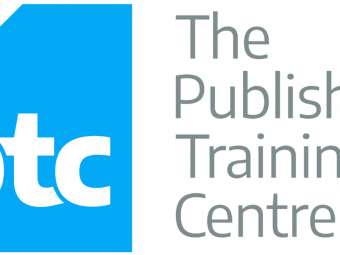How To Read Piping And Instrumentation Diagrams Made Easy
Tags: Piping
All you'll ever need to easily Read P & IDs in one Clear and Concise Course for Plant Operators, Maintenance & Engineers
Last updated 2022-01-10 | 3.7
- Students will learn how to read and interpret Piping and Instrumentation Diagrams like a Pro.- Define what a P&ID is
- Describe why P & IDs are important to the operation of a facility
What you'll learn
Students will learn how to read and interpret Piping and Instrumentation Diagrams like a Pro.
Define what a P&ID is
Describe why P & IDs are important to the operation of a facility
Give examples of when you might use a P&ID
Use a Legend/Lead/Master sheet as a reference for identifying P&ID symbols and labels found in line tables
instrument; symbols and designations tables
and graphic symbols tables
Identify the Symbols for selected vessels
compressors
heat exchangers
valves
and pumps
Interpret an example Numbering System used for labeling Equipment on P&ID
Explain why Instruments and Control Loops are important for the Safe Operation of a Plant
Identify the Symbols for selected Instruments
Describe how instruments in Control Loops are related and named on a P&ID
Identify Piping and give specific information about a pipeline including Material in the line
Size
and Line Number as well as whether or not the line is Insulated or Traced
Identify pneumatic
electric
and hydraulic instrumentation signals lines
Trace the flow of a process stream into a P&ID
through the pipes and equipment
and out of a P&ID
Practice with real P & IDs by exploring the 6 Areas of P & IDs which really helps to simplify this activity
Learn each area one step at a time before bringing together all the areas to read a complete and real P & ID
By the end of the course
students will be able to handle reading and interpreting any level of complexity of a P & ID
* Requirements
* The need and motivation to learn about reading and interpreting Piping and Instrumentation Diagrams* Works better for someone in the Process and Power Plant industries
* or in school to get into this type of industries
Description
- Students will learn how to read and interpret Piping and Instrumentation Diagrams like a Pro.
- Define what a P&ID is
- Describe why P & IDs are important to the operation of a facility
- Give examples of when you might use a P&ID
- Use a Legend/Lead/Master sheet as a reference for identifying P&ID symbols and labels found in line tables, instrument; symbols and designations tables, and graphic symbols tables
- Identify the Symbols for selected vessels, compressors, heat exchangers, valves, and pumps
- Interpret an example Numbering System used for labeling Equipment on P&ID
- Explain why Instruments and Control Loops are important for the Safe Operation of a Plant
- Identify the Symbols for selected Instruments
- Describe how instruments in Control Loops are related and named on a P&ID
- Identify Piping and give specific information about a pipeline including Material in the line, Size, and Line Number as well as whether or not the line is Insulated or Traced
- Identify pneumatic, electric, and hydraulic instrumentation signals lines
- Trace the flow of a process stream into a P&ID, through the pipes and equipment, and out of a P&ID
- Practice with real P & IDs by exploring the 6 Areas of P & IDs which really helps to simplify this activity
- Learn each area one step at a time before bringing together all the areas to read a complete and real P & ID
- By the end of the course, students will be able to handle reading and interpreting any level of complexity of a P & ID
Course content
10 sections • 36 lectures
A Welcome Message From Your Instructor - Meet Brad and The Course Main Outline Preview 09:19
Chapter 1: Intro To Reading P & IDs Made Easy Preview 11:00
Chapter 1: Case Study #1 - Williams Geismar Fire & Explosion (Blocked In) Preview 19:03
Chapter 2: What is a P & ID and What is it all about - P & ID Anatomy Preview 14:07
Chapter 2: Functions and Purpose of P & IDs, When to use them & Who uses P&IDs Preview 10:42
Ch 2: Why P & IDs Look Complicated - Importance Of and P & ID Support Documents Preview 11:25
Ch 2: PIP PIC 001- What P & IDs Should and Shouldn't Include, P & IDs vs. PFDs Preview 10:28
Chapter 2: BP Texas City Final Case Study Number 2 Preview 01:00:36
Chapter 3: Intro to Chapter 3 and The 2 Forms of Information found on P & IDs Preview 05:53
Chapter 3: Indepth look At The 6 Piping and Instrumentation Diagram Parts/Areas Preview 09:57
Chapter 3: Area 1 Title Block (The P & ID Identification Area) Preview 10:38
Chapter 3: Area 2 Main Drawing or Main Diagram Preview 18:33
Chapter 3: Area 3 Line Schedules Preview 09:40
Chapter 3: Equipment Descriptions Preview 09:50
Chapter 3: Area 5 Issue Descriptions Preview 10:05
Chapter 3: Area 6 Notes and Zone Numbers on Piping & Instrumentation Diagrams Preview 16:03
Chapter 4: Intro- The P & IDs Legend- The Golden Key For Reading P & IDs Anytime Preview 21:22
Chapter 4: Line Designations Preview 10:48
Chapter 4: Instrument Designations Preview 35:57
Chapter 4: Line Symbols Preview 09:53
Chapter 4: Graphic Symbols Preview 11:34
Chapter 5: Intro - Vessels and Heat Exchangers Preview 20:37
Chapter 5: Discussion of 3 Types Of Pumps- Centrifugal, Gear and Vacuum Preview 06:33
Chapter 5: Let's Dive Into Compressors and Blowers Preview 07:15
Chapter 5: Instrument Symbols, Pipe Symbols and Steam Traps Preview 12:46
Chapter 6: Intro - Valves In Control Loops and How They Are Controlled Preview 28:18
Chapter 6: Identify Automatic Valve Fail Position from a P & ID Symbol Preview 09:10
Chapter 6: Primary Flow Elements and Other Measurement Symbols Preview 09:42
Chapter 6: What are Transducers and Their Functions Preview 07:45
Chapter 6: Why are Valves, Instruments and Control Loops Important Preview 14:34
Chapter 7: Intro - Line Designations and Line Label Demonstration Preview 12:59
Chapter 7: Heat Tracing and Instrument Lines Symbols Preview 05:46
Ch 8: Intro - What is a Process Control Loop and Role of Constituent Instruments Preview 27:01
Chapter 8: Mastering Interlocks and MOCs For Reading P and IDs Preview 11:52
Ch 9: How To Trace A Process Stream Flow within & exiting P and IDs Explained Preview 26:45
Demo Exercise on Reading P and IDs, 2 BONUSES ATTACHED and Course Conclusion Preview 11:24
This is an eBook with almost 95% of the material covered in the videos. The WorkBook is the second bonus item and has Answers for theory questions on the material covered in the course. You will find 2 P & ID drawings for your practice with the accompanying questions and answers.








 This course includes:
This course includes:
















